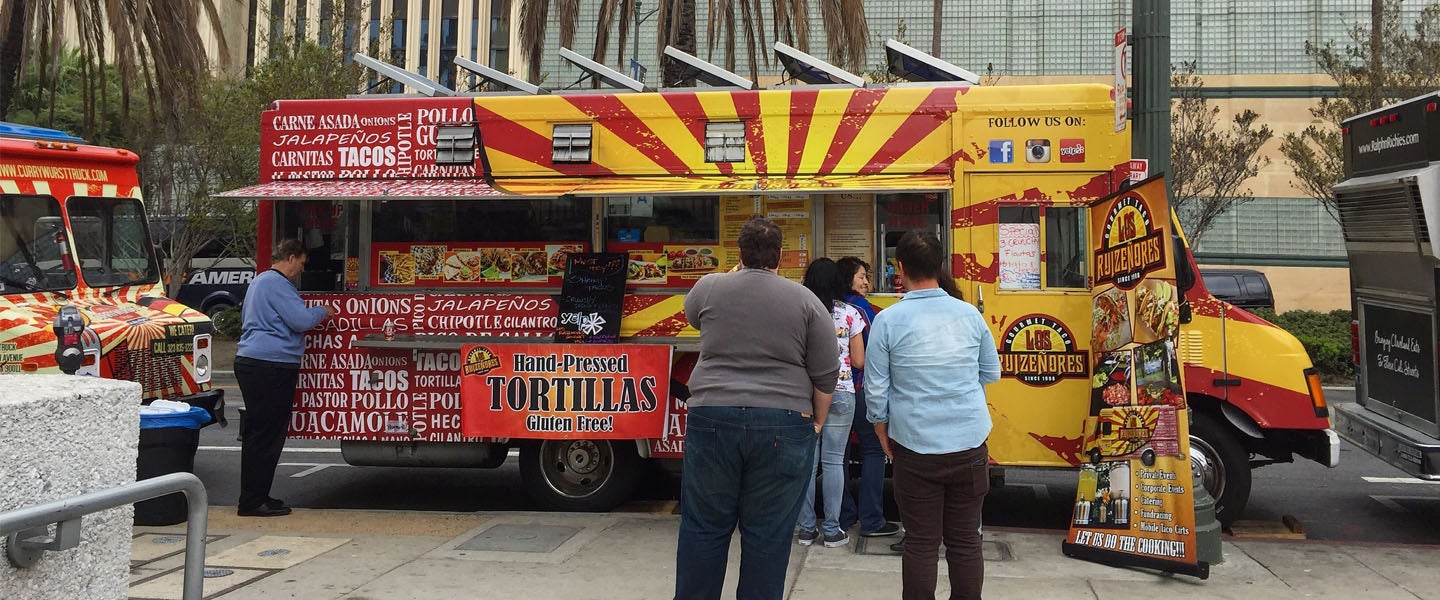In 2016, Marco Gutierrez, founder of Latinos for Trump, famously appeared on MSNBC to endorse harsher immigration policies. “My culture is a very dominant culture, and it’s imposing and it’s causing problems,” he said. “If you don’t do something about it, you’re going to have taco trucks on every corner.”
America’s response: Er… yes please?
Me every day when there's #TacoTrucksOnEveryCorner pic.twitter.com/mkLOQlNFqP
— Guav (@guav) September 2, 2016
Who doesn’t love taco trucks (besides Marco Gutierrez)? Everyone loves a taco truck. The food is delicious, the service is quick, and most of all, everything is incredibly cheap. My go-to taco truck, for instance, sells tacos for only $1.50 each and massive burritos for only $6.25 each. You think it’s a coincidence that I have exactly $7.75 in change in my pocket at all times? I assure you, sir, it is not.
Taco trucks are so cheap, in fact, that you do have to wonder how they manage to make any kind of a profit, which is why I sat down with Brett Lindenberg, founder of Food Truck Empire, to figure out the finances of the things. Turns out, there are three basic explanations…
The Ingredients Are Incredibly Cheap
First and foremost, Lindenberg explains that the ingredients used to make your average taco truck fare — tortillas, cilantro, onions — are “super, super low-cost food items, especially when you buy them in bulk.” For example, you can buy 100 six-inch corn tortillas, 10 pounds of yellow onions and one pound of cilantro from Costco for a total of only $11.77, and many taco truck owners can find even better deals, depending on their relationships with local wholesalers.
Meat, of course, is generally more expensive than the other ingredients: In 2018, the National Chicken Council estimated that beef costs $2.90 per pound on average. But Lindenberg says, “As long as you’re not putting too much meat on there, you’re gonna be in a good spot from a cost standpoint when you’re buying in bulk.” And as we all know, the average taco truck taco only contains a small portion of meat, so you can see where they can make a profit even when selling $1 tacos.
“Your cost per taco, as a food truck owner, can easily be 40 cents on that $1 taco,” Lindenberg emphasizes. “Burritos are cheap, too: You crank them out super fast, and you don’t need much labor to make them. Beans and cheese also aren’t too expensive, especially on a large-scale.” Lindenberg adds that this also explains why fast-food taco chains, like Taco Bell or Del Taco, are so incredibly cheap, since they do the exact same thing, but on an industrial scale.
The Labor Costs Are Super Low
“Most food trucks are owner operated,” Lindenberg points out. “Labor in a restaurant or a food truck, if you’re hiring people, can add up to 33 or 30 percent of whatever your profit would be. But if you’re the operator of the food truck, you don’t really need to pay out any employees — that kinda wipes out an entire expense.”
He’s right: The average food truck manager makes $13.76 per hour, according to indeed.com, which means taco truck owners can save more than $100 per day by managing their business themselves. Making labor even cheaper, as Lindenberg mentioned earlier, taco truck fare is generally quick-and-easy to make, which means taco truck owners can usually get everything done with only a few people behind the scenes, all of which translates to cheaper food for people like me.
You Don’t Have to Pay Rent
This probably sounds self-evident, but what the hell, let’s get into it. While there are many costs that go into owning and operating a taco truck, Lindenberg points out, “If you have a truck, you don’t have to pay the monthly lease fee on a brick-and-mortar location.” That’s not to say taco trucks don’t have their own set of costs, though: “A lot of these people have to use a commissary to be able to operate and park their trucks overnight, and that can easily add up to $1,000 or $2,000 per month,” Lindenberg explains.
Operating a brick-and-mortar restaurant, however, is still much more expensive: Leasing a 2,000 square foot restaurant can cost between $5,000 and $8,300 per month in total (if you’re in a large, highly populated city, multiply that figure by the number of Russian oligarchs currently laundering their money in local property, then add 10).
Better yet, for taco truck owners, Lindenberg says, “You can get a cheap, old taco truck for a pretty low price with all the equipment in it.” He estimates that, unless you want a new, state-of-the-art taco truck, you can expect to pay between $20,000 and $30,000.
So there you have it: Taco truck food is cheap, because everything about operating a taco truck is cheap (shut up, you’re obvious).

